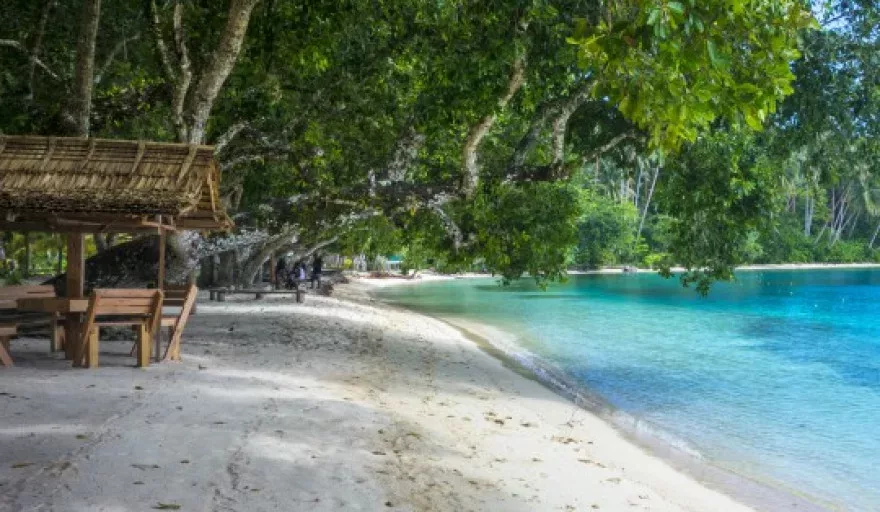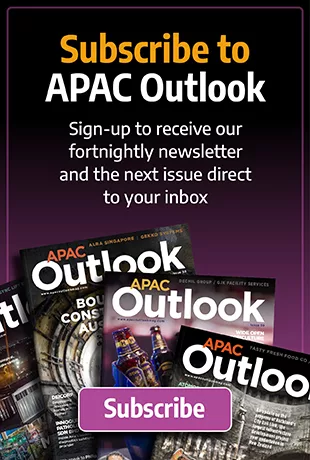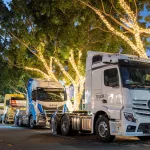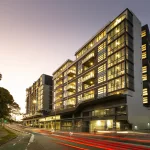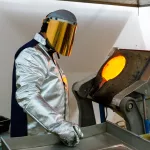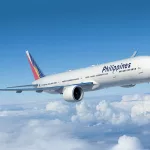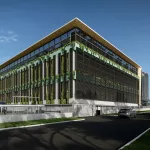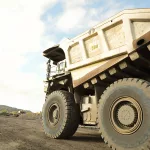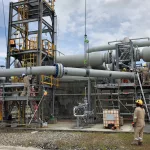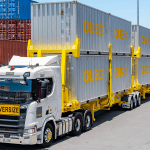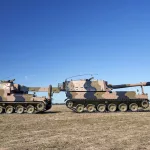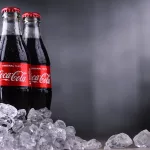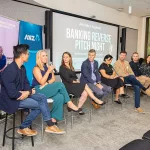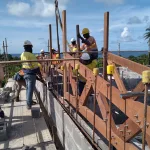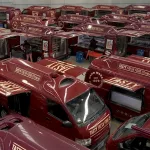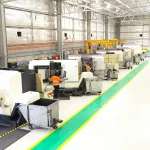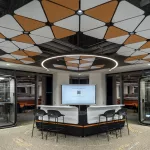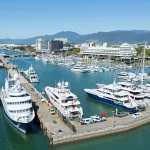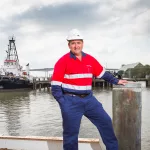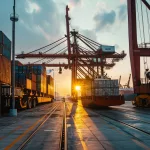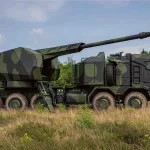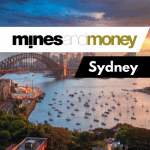For many, notions of paradise revolve around peace, relaxation, untouched beauty, and isolation; a haven that almost seems unearthly in its make-up. When visiting the Solomon Islands though, you get a more loaded, complex, deep and poignant form of paradise that is optimising its natural tourism appeal to boost its overall economy and business acumen.
SOLOMON ISLANDS
Not just a fortress of solitude for holiday makers, the Solomon Islands in fact made its name as a genuine fortress during World War II and now reaps the sympathy and deserves of that hardship through a tourist influx that comprises war buffs, veterans and families; as well as the inevitable swathe of holiday-makers, scuba divers, surfers and backpackers each year.
More recently though, a new demographic has entered the equation too, in the form of the business traveller. Creating a circle of opportunity, the increase in tourism has boosted levels of hospitality and conference potential in the country; subsequently encouraging more and more expos, delegations and conventions to be hosted across the nine provinces – most prominently in the capital, Honiara.
Lonely Planet recently described the country as one of the top five in the world to visit, calling them “the South Pacific Islands as they used to be”, and this is backed-up vehemently by those truly in the know. The Solomon Islands Visitors Bureau has enjoyed a front-row seat to the rise of its beautiful country, and is playing an integral role in capitalising on its potential in the future.
“The newly emerging, multi-faceted Solomon Islands can pretty much cater to every taste, desire and budget with its myriad choice of accommodation; from the ‘big gun’ hotels of the capital Honiara to boutique resort accommodation, eco-lodges and home stays dotted across the entire archipelago,” the Company says. “Best of all, and quite a surprise for many travellers, the Solomon Islands are very easy to reach. It takes less than three hours to reach the Solomon Islands’ capital Honiara from Brisbane flying on Solomon Airlines’ four weekly services or via Virgin Australia’s bi-weekly services.”
FACTS AND FIGURES
- Languages: English
- Area: 28,400 square kilometres
- Population (2016): 599,419
- GDP (2011): $840 million
- Currency: Solomon Islands Dollar (SBD)
- Time zone: UTC+11
- Dialling code: +677
- Internet TLD: .sb
- Climate: Ocean-equatorial
A HISTORY OF THE SOLOMON ISLANDS
By Solomon Islands Visitors Bureau
A scattered archipelago of some 990-odd richly forested mountainous islands and low-lying coral atolls, the Solomon Islands has been attracting international tourism since 1568 when Spanish explorer, Alvaro de Mendana first sailed into this tucked-away corner of the South Pacific.
Mendana’s legacy can still be found in the Solomon Islands today with many of the islands still bearing the Spanish names he gave them; Santa Isabel, San Cristóbal and perhaps the most famous of all, Guadalcanal, the name synonymous with World War II which takes its name from a small township in Andalucia in Southern Spain.
Bur for the most part, the Solomon Islands and their quiet, reserved people – a mix of Melanesian, Micronesian and Polynesian cultures – were left pretty much alone after Mendana’s visit until 300 years later when Great Britain was given control of the entire territory.
Things changed dramatically during World War II and the Solomon Islands became a household name when the forces of Imperial Japan invaded, the region becoming the scene for some of the bloodiest battles in the Pacific theatre and most famously the battle of Guadalcanal when thousands of Japanese and US servicemen lost their lives.
2017 is particularly significant as it marks the 75th anniversary of the Guadalcanal campaign.
The British re-gained control in 1945 and in 1976, the Solomon Islands became self-governing before gaining full independence in 1978.
Little has changed in the Solomon Islands since then and it’s thanks to this that the Solomon Islands have become such a breathtakingly fresh destination for those international travellers to get off the beaten track and look for a new and very different experience.
Today, World War II buffs, veterans and their families – mostly American and Japanese – as well as SCUBA divers and surfers looking for the ultimate uncrowded wave, make up the bulk of the 24,000 or so international travellers who visit every year.
THE BUSINESS END
It is those 24,000-plus international travellers who have helped mould the financial infrastructure of Solomon Islands that thrives in the present day. The aforementioned increase in tourists, historians and business travellers entering the country from a growing number of access routes has had a profound impact on the hospitality sector in particular.
Even over the past year, the rise has been notable and thus, the hotel, lodge, resort and home stay domains are responding accordingly.
“Figures for 2016 show for the third year in a row that Solomon Islands’ international visitation increased; up 7.3 percent on 2015,” the Visitors Bureau explains. “Australian visitor arrivals led the way, accounting for 41.1 percent of overall international visitation, with New Zealand and the USA coming in as our second and third most important source markets.
“But we also continue to see good growth from PNG, up 2.6 percent in 2016.”
The challenge now for the businesses flourishing as a result of this visitor increase is differentiation. The attention is slowly but surely turning away from saturation, to competition. Sub-sectors such as lodges, motels and home stays are adding diversity for the different wealth statuses and preferences of visitors; but each having to retain a strong sense of Solomon Islands identity and culture.
The Visitors Bureau continues: “One of our biggest opportunities lies in the fact that the Solomon Islands holds a strong appeal for international travellers looking for something different; a unique ‘living’ culture, WWII history, diving, fishing, surfing, trekking and yachting to cover just some of the niche tourism opportunities we offer.”
Q&A WITH THE SOLOMON ISLANDS VISITORS BUREAU
www.facebook.com/visitsolomonislands
Founded in 1969 as the Solomon Islands Tourist Authority (SITA), before rebranding in 1996 as the Solomon Islands Visitors Bureau, the SIVB is a statutory body incorporated into the Ministry of Culture & Tourism, and administered specifically under the auspices of the Department of Tourism.
As the national tourist office of the Solomon Islands, the Solomon Islands Visitors Bureau’s primary role is to promote the many and varied opportunities the destination offers to international travellers; in the process fostering an appreciation of the country’s unique culture, history and natural environment and helping to create a sustainable and environmentally responsible tourism industry to the benefit of all Solomon Islanders.
Today, with full Government support, the SIVB plays a major role both domestically and internationally and is playing a major role in the country’s economic future.
The Bureau introduces: “Tourism is being seen as an economic saviour for the Solomon Islands and is now positioned as the fifth major source of foreign exchange after timber, crude palm oil, cocoa beans and copra. The Government has gone on record as saying it sees tourism becoming a top two source of foreign exchange within the next five-10 years.”
What is the strategy being encouraged by the SIVB to reach this goal?
SIVB: From the SIVB’s perspective we ideally want to grow our leisure market which currently sits at 30 percent of our overall international visitation. With new operators coming online in both our traditional and developing source markets we are confident this growth will be achieved.
We also hope to see an increase in our accommodation infrastructure, particularly in Honiara. We see huge potential from the MICE and related business traffic and need more resources to tap into and grow this area of the business.
We are hopeful more accommodation will come on line as we approach the 2023 staging of the Pacific Games which will see big infrastructure development in and around Honiara.
The Solomon Islands Government has determined tourism – currently one of the country’s top five economic pillars – will achieve status as the number once source of foreign exchange earnings within the next five-10 years.
Priority is now being placed on tourism development and an effort is being taken to facilitate growth under the country’s National Tourism Policy as well as bring focus to bear on upgrading tourism accommodation and product.
The development of the extremely lucrative cruise sector remains a key focal area of the strategy and one which the Ministry of Culture & Tourism and the Solomon Islands Visitors Bureau has aggressively developed in partnership with Carnival Australia and P&O Cruises.
The outlook for 2017 too is strong with a further 19 vessels expected to visit Solomon Islands waters this year which is a great achievement in itself.
Where is the major influx expected to come from and how is it being facilitated from an access perspective?
SIVB: Australia and New Zealand remain strong market sources. Having a proactive national airline in Solomon Airlines plays a critical role in us meeting our objectives around the world; and Solomon Airlines’ ongoing codeshare agreements with Qantas Airways, Air Nuigini, Air Vanuatu – and on a more regional basis, Air Kiribati – gives the Solomon Islands access to the globe.
Within the Solomon Islands, traditional economic bases – particularly the mining and timber industries – are moving into ‘sunset’ mode, and tourism is set to play a major role in the Solomon Islands’ ongoing economic fortunes.
Having a fully-supportive government is critical to the Solomon Islands’ tourism sector achieving its objectives.
Taking a more general industry stance, how would you evaluate the tourism sector in the Solomon Islands now compared to its condition when the Visitors Bureau began?
SIVB: Huge changes have occurred in the time that current CEO, Josefa Tuamoto has been in the chair. A Fijian national and former CEO and head of Tourism Fiji – where he enjoyed immense success and is credited with having played a major role in helping to change the country’s tourism fortunes – Tuamoto was invited to take on the role in 2013 and since he came on board, the country’s international visitation figures have increased year-on-year by an average of seven percent.
A shrewd marketer, Tuamoto has looked beyond the Solomon Islands to strengthen his international team with PR and marketing consultants in Australia, the US and continental Europe, and the Solomon Islands is now firmly placed under the international spotlight; certainly a far cry from where it was in the ‘60s.
What is in store for the Solomon Islands over the course of 2017 and beyond to continue the good work already commenced and to enhance its reputation as a tourism and business travel hub further in the future?
SIVB: New constructs include new resorts in and around Honiara such as Ginger Beach Resort and the Coral Seas Resort & Casino.
In terms of events, The Guadalcanal 75h anniversary celebrations took place in August. But the next really big thing on the horizon is the staging of the Pacific Games in 2023 which is a catalyst for a major increase in investment in the country; from stadia to hotels and new roads, upgraded hospitals, general infrastructure, etc.
Looking forward, what progress and development would you hope and expect to be able to report back for the SIVB and for the business travel industry in the Solomon Islands as a whole?
SIVB: Hopefully the SIVB will have played a major role in attracting new hotel development both in and around Honiara and further afield to the other eight provinces. And tourism will be well on the way to becoming one of the country’s prime sources of foreign exchange earnings.
OUT AND ABOUT
Competition could become the key word in the Solomon Islands over the next decade, as the country gears up for a hospitality contest in order to prepare for an equally competitive Pacific Games which is set to take place in 2023.
Having never had a better chance to showcase its credentials on such an international scale, it will also be an opportunity to show off and to boast its infrastructural evolution to those in the surrounding region who are no doubt looking to replicate the country’s rise to prominence.
From a transport perspective, the might of Solomon Airlines will be complemented by regional airlines such as Air Niugini in Papua New Guinea and Fiji Airways in Fiji to help facilitate ease of access to the Solomon Islands, while businesses such as Ela Motors will be on hand to ensure smooth transition once in the country.
And then, the aforementioned hospitality games can begin. Athletes, spectators and media will join the swathes of visitors and tourists; each with their own preferences and ideas about the experiences they want to gain from visiting the Islands.
For many, the beach resort still serves as the most alluring option, bringing back to mind those elements of ‘paradise’. For the business traveller, even in the build-up to the Games, this opportunity can be found in abundance. Unlike most ‘exotic’ business trips, there needn’t be a decision between luxury accommodation, and convenient CBD-dwelling. The two are merged here, most commonly in and around the capital, Honiara.
Ropiko Beach Resort and Honiara Hotel epitomise examples from each side of the coin: the former serving as a gateway to Marovo Lagoon and an idyllic retreat on the doorstep of civilisation, while the latter offers engulfed civilisation on the doorstep of an idyllic paradise.
A similar contrast can be found between the enigmatic and thoroughly enjoyable Imagination Island Coral Reef Resort, and Heritage Park Hotel; once again showcasing the mix of ocean adventure, and sophisticated hospitality that now exist harmoniously, often within yards of each other.
Alternately, the growing number of low-mid budget accommodations is diversifying the sector even more; the Rock Haven Inn and Hibiscus Homestay perfect examples of a growing home-from-home experience that can now be found across the nine provinces and that are often perfect for the business traveller demographic.
From these bases, the leisure activities on offer leave little by way of surprise, but everything in terms of adventure and amazement. And once again, this needn’t be a choice between pleasure and business, with much of the country’s ocean-based activities a mere stones-throw from the key towns and cities.
The aforementioned Marovo Lagoon is chief among the ‘pleasure’ category, its coral reefs having been described as the “eighth wonder of the world”. Bonegi offers a slight variation on the theme however. In 1942, two large Japanese freighters sank 12 kilometres off the coast of Honiara, and the remains now serve as a poignant diving nirvana reminiscent of an enlarged fish tank display.
Kolombangara Volcano and Mataniko Falls will give you the chance to explore nature in all its glory should time – and fitness – allow, but inland pursuits are equally catered for should history, culture and cuisine be more your style. Vilu War Museum and Honiara’s Central Market are experiences not to miss to this end.
OUTLOOK RECOMMENDS
Hospitality
As the gateway to the world-renowned Marovo Lagoon – the largest double barrier lagoon in the world – Ropiko Beach Resort is a “true topical paradise”.
Situated on Gatokae Island, Ropiko Resort makes the most of the local produce, styles and culture, on the doorstep of the ocean; boasting newly built accommodation that encompasses both relaxation and leisure.
“Whether you’re here to relax or explore Ropiko can cater to everyone,” the Resort states on its website. “Activities include world famous diving and snorkelling, fishing, walks to the local village (and up Gatokae’s mountains if you’re keen), World War II site visits and visiting an underwater volcano. Or if that’s all too much you can simply relax on the beach.”
The Honiara Hotel offers a more central option close to the capital’s city centre. Complementing a recent expansion of its accommodation offering, the hotel has also strived to diversify its facilities in recent years; aiding aspects of comfort, entertainment, refreshment and external excursions.
Imagination Island Coral Reef Resort
“At Imagination Island, we aim to give guests an unforgettable adventure,” the Resort emphasises on its website. Providing a more exclusive feel, you can enjoy your very own paradise at Imagination Island’s four reef bungalows, which are built over the water and suit couples, individual and families alike.
In a region where modernity and glamour are so prevalent, Rock Haven Inn continues to allure visitors virtue of its older style accommodation; albeit renovated with contemporary requirements in mind. Offering budget to mid-range rooms and apartments, much of the Inn’s attraction comes from its fantastic views and central location.
Honouring the history of Honiara, Heritage Park Hotel’s appeal goes beyond the confines of the comfortable and attractive facility; instead serving as a historical document that looks back across the pasts of all nine Solomon Islands provinces.
Hibiscus Homestay
Since relocating, Hibiscus Homestay has reaffirmed its reputation as a home away from home. Originally successful as a family residence, those core values have been retained across the new comfortable bedrooms, while the veranda, barbecue and transport links compound its everyman appeal.
Pepele Seghe
Rekona Flourish Lodge
Tavanipupu Island Resort
Tanuli Royal Plains Motel
Transport
Complementing its domestic links and its routes to Tonga, Samoa, Tuvalu and Vanuatu, Fiji Airways’ flights to the Solomon Islands have helped to facilitate numerous backpackers and tourists in recent years as they paradise hop. As such, the Company is revered as the country’s proud flag carrier, and among the region’s leading airlines.
Entertainment
Pacific Casino Hotel
Close by to the Honiara Henderson International Airport, Pacific Casino Hotel could offer a profitable and enjoyable beginning, middle or end to your stay on the Islands; bridging leisure and hospitality seamlessly across 142 spacious, ocean-view rooms. “Let us show you the warmth of Solomon Island hospitality,” it declares on its website.
TRANSPORT LINKS
Understandably and sensibly, the Solomon Islands’ transport links from an external and peripheral perspective are dominated by the collaborating airlines in the surrounding Pacific region; and equally importantly from Australia. The latter especially is a hub for all international visitors emanating from around the world; Brisbane serving as the key portal.
This not only boosts visitation from all other continents but has inevitably had a primary effect on people coming to the Solomon Islands from Australia itself.
“International visitation to the Solomon Islands has been buoyed by a huge 61.9 percent increase, with Australian visitation jumping by 29 percent in June alone,” the SIVB notes. “Official figures released by the Solomon Islands’ National Statistics Office shows a total of 2,561 international visitors recorded for the month.
“This represents a 29.1 percent increase over the 1,984 tally achieved for the corresponding month in 2016 and is a vast improvement over a sluggish Q1 performance which saw figures for the period dip by 3.1 percent compared to Q1 2016.
“The SIVB is confident of an even stronger result across Q3, where there is guaranteed to be a huge influx of visitors – predominantly American, Australian, New Zealand and Japanese – attending the 75th anniversary of the Battle of Guadalcanal and related commemorative services across the archipelago.”
The June figures bring the number of visitors recorded over the six month period at the start of 2017 up to 11,306; a 5.5 percent rise on 2016’s numbers and “keeping the Solomon Islands’ tourism industry on track for yet another positive year”.
The SIVB continues: “Australian visitor arrivals continue to dominate; the 1,443 tally recorded for June representing a 61.9 percent increase over the 891 recorded in June, 2016 and accounting for 40.2 percent of all visitations.
“Increases were also achieved in several other key source markets including New Zealand and the US, 10.6 percent and 29.5 percent respectively, while visitation from Papua New Guinea jumped by a huge 128.5 percent.”
The next focus then hones in on internal transport infrastructure. In the same way that the hospitality sector has had to adapt and evolve according to visitor number increases, so too has the transport network.
Having said that, unlike most countries who would be working hard on enhanced roads or rail routes; this need has presented the opportunity for businesses in the Solomon Islands to flourish on less stable ground. As an archipelago, the best way to travel, almost exclusively, is by sea; especially if you wish to explore more than one of the islands and provinces.
A host of ferry companies are on hand to facilitate your hops to this end, ensuring that your adventure never stops, and is instead engrained into your stay on the Islands.
LANDMARK ATTRACTIONS
Marovo Lagoon
“The Marovo Lagoon is a double barrier reef enclosed lagoon, which in practise means a chain of coral reefs and islands that encircle the big Vangunu Island… large parts of the Marovo Lagoon are nearly as untouched as in 1946 when American Author James A. Michener in his Pulitzer Prize winning book Tales from the South Pacific described it as the eighth wonder of the world.” – Pacific Island Living
Bonegi
“About 12km west from Honiara, Bonegi is music to the ears of divers, snorkelers and sunbathers. Two large Japanese freighters sank just offshore on the night of 13 November 1942, and make for a magnificent playground for scuba divers, who call them Bonegi I and Bonegi II. As the upper works of Bonegi II break the surface, it can also be snorkelled. There’s also a black-sand beach that is suitable for a picnic.” – Lonely Planet
Honiara Central Market
“While Honiara won’t be mistaken for Lagos, the country’s bubbling principal food market covers a whole block between Mendana Ave and the seafront. It has a huge selection of fresh produce, especially fruits and vegetables that come from outlying villages along the northern coast and from Savo Island.” – Lonely Planet
Kolombangara Volcano
“Kolombangara is a possibly active stratovolcano that forms the almost perfectly round, 15km diameter Kolombangara Island in the New Georgia Islands group of the Solomon Islands. Its name in local language roughly translated to “Water Lord”, referring to the many (about 80) rivers and streams that drain its flanks.” – Volcano Discovery
Vilu War Museum
“The journey to Vilu War Museum from Honiara takes about an hour and visitors with an interest in military history should write it down as a must-visit attraction.” – Richard Moore, Tiki Touring
Mataniko Falls
“One of the star attractions in Honiara’s hinterlands is Mataniko Falls, which feature a spectacular thundering of water down a cliff straight into a canyon below… A guide from Lelei is required – the tourist office in Honiara can make arrangements on your behalf.” – Lonely Planet

